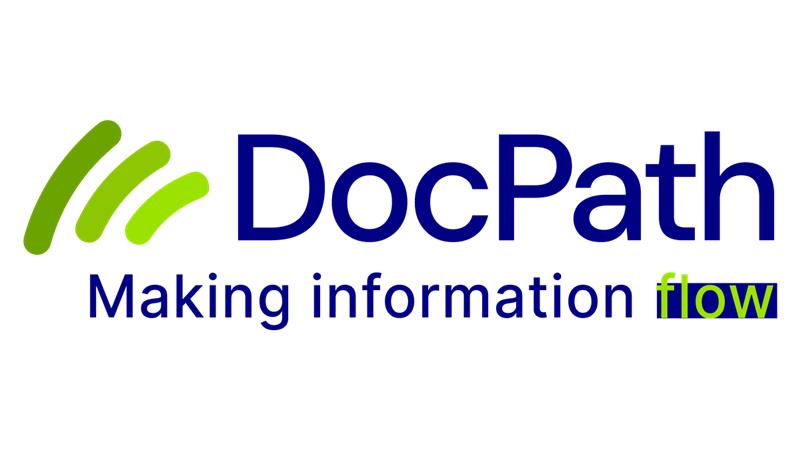The company, with over three decades of expertise in the document management and customer experience sector for medium to large enterprises, has expanded its team and set its sights on reaching the SME market through channel partners.
For decades, large organizations have faced the challenge of organizing the massive volumes of corporate information stored in paper documents, digital files, databases, or corporate portals. In the 1990s, this led to the emergence of what became known as «knowledge management,» aimed at measuring and preserving the intellectual capital of any organization. DocPath was founded 33 years ago to address these new needs, primarily among financial institutions, insurance companies, and government entities.
Today, the software vendor has two offices in Spain and serves over 300 clients in 20 countries—including North America, Latin America, Asia, and Oceania—thanks to a team of around 100 professionals, 50 of whom are based in Spain.
DocPath’s international development has been bolstered by strategic milestones such as the acquisition of U.S.-based Resolutions, which enabled the company to consolidate its presence in North America and led to the opening of an office in Atlanta. In fact, 75% of the company’s current business—around €5 million—now comes from outside the Spanish market.
To reach its goal of doubling that revenue figure within the next three years, the company is taking several important steps, such as hiring a senior executive from a competing firm in the United States and targeting the SME market with SaaS-based solutions.
“To support this strategy, we are considering incorporating wholesalers into our commercial model, who, through their resellers, can help us gain greater market reach,” says Juan Carlos Olivares, CEO of DocPath.
It’s worth noting that until now, the company’s traditional sales model has been based on direct selling. In 2004, it created Valpatek Technology Group, which, among other responsibilities, has provided implementation and support services to its clients—primarily medium and large companies.
New Challenges in Document Management and Customer Experience
Organizations are facing increasing complexities in automating processes, personalizing communications, and managing contracts efficiently. DocPath’s solutions address these challenges with tools for large-scale document creation and distribution, platforms to improve collaboration and operational accuracy, and advanced contract management and customer experience personalization powered by data analytics and artificial intelligence.
The adoption of Customer Communications Management (CCM) and Customer Experience Management (CXM) solutions is becoming increasingly relevant in response to the growing demand for personalized, customer-centric experiences. CXM tools help companies understand, manage, and improve every customer interaction throughout the entire lifecycle, offering a comprehensive view of the relationship and fostering greater loyalty and satisfaction.
In this context, DocPath aims to lead the segment by offering more than a dozen integrated solutions that enhance customer experience and help companies stand out in the market. Its focus on modularity and flexibility allows DocPath to adapt to the specific needs of each client.
As Juan Carlos Olivares explains, “Unlike our competitors, our model facilitates integration and migration from outdated legacy systems—some of which are no longer supported or technologically stagnant—resulting in high maintenance costs and low customer engagement. In contrast, we position ourselves as a strategic partner for companies in the region.”
The Importance of Document Management in the Financial Sector
Document lifecycle management has become a pillar of digital transformation and a key element for optimizing customer experience in the financial sector, while also ensuring security and regulatory compliance.
According to Mastercard, digital services not only expand account ownership, but also have a direct impact: 72% of users save time, 59% plan their finances better, and 53% gain access to more credit. Achieving these results requires internal processes that are just as agile and secure—and this is where document management plays a crucial role. By digitizing and centralizing information, financial institutions can respond more efficiently, deliver personalized experiences, and build trust in every interaction, enhancing their competitiveness in an increasingly digital market.
The implementation of advanced document solutions not only streamlines workflows but also delivers value across various business areas:
-
Operational efficiency, through scalable and fast document production with integrated data;
-
Security and legal assurance, via enforceable contracts and valid agreements with secure digital signatures;
-
Personalized services, enabling intelligent data analysis for loyalty, upselling, and cross-selling strategies;
-
Regulatory compliance, with version control, full audit trails, and intuitive design tools;
-
Smart storage, using secure platforms with advanced search by title or content;
-
Fraud prevention, through mechanisms that protect the integrity of agreements and prevent tampering.
“When banks manage the entire document lifecycle centrally, they don’t just gain internal agility—they also improve customer satisfaction and reduce operational costs. We’ve seen cases where document automation enables responses in seconds to requests that used to take days, or allows for contracts with full legal validity to be generated in just minutes. All of this translates into enhanced experience, trust, loyalty, and a solid foundation for innovation in financial products,” concludes Mauricio Saavedra Pazos, Sales Director for Latin America at DocPath.





